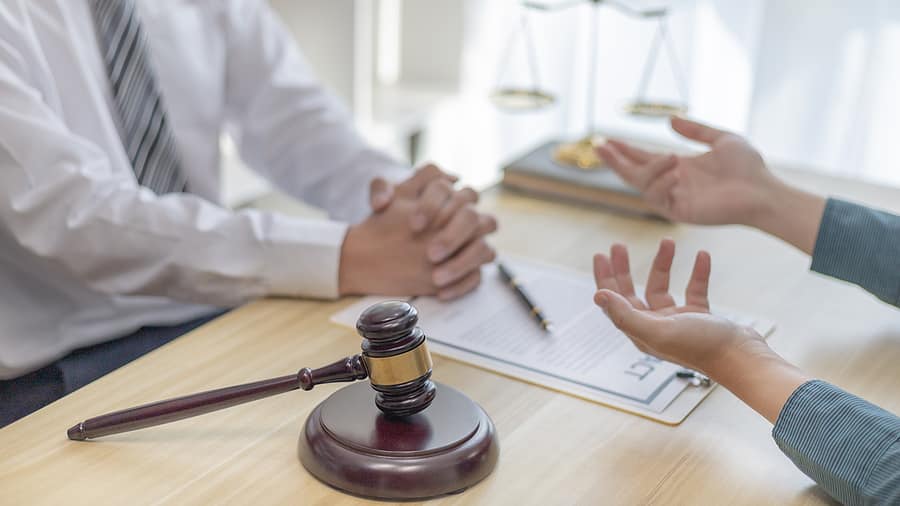Law enforcement does not have a legal right to hold a defendant indefinitely without them being able to go in front of a judge. Otherwise, it would be a violation of the defendant’s rights that could jeopardize the prosecution. The initial appearance in front of a judge is called an arraignment. There are several substantive things that will happen in an arraignment that provide an introduction of sorts to the case.

The arraignment is different depending on whether the defendant is charged with a misdemeanor or felony. Most of the differences center on the possible release of the defendant while awaiting trial on bail.
- The Charges Against You Are Read
- You Will Enter a Plea (Almost Always “Not Guilty”)
- The Prosecution Must Show Probable Cause
- The Judge Will Set Conditions for Release and Decide Bail
- Asking for the Substitution of the Judge
The main purpose of an initial appearance is for you to be made aware of the charges against you. By the time of the arraignment, the state has drafted a criminal complaint against you. You will have either already received this complaint in the mail, or you will be read the complaint for the first time at the initial appearance. You must be made aware of the specific charges that you are facing and some particular information regarding these charges.
You will be asked to enter a plea at the arraignment. In practically every single case, your plea should be not guilty. If you choose to negotiate a plea bargain with the prosecutor, you can always change your plea to guilty. Pleading not guilty will allow you to mount the best possible defense or have the time necessary to consider your legal options. Once you have entered your plea, you may be able to view the police report and other evidence that resulted in your charges. Even if you know that you are guilty, never cut off your legal options by pleading guilty at the arraignment.
The judge will also review the information that supports whether there is probable cause to charge a defendant. The prosecution does not need to prove guilt at the arraignment. That action takes place at the trial. However, the judge needs to decide whether there is enough behind the charges to continue with the case. Probable cause is defined as a reasonable basis to believe that a crime has been committed. The judge will dismiss the charges if they do not believe that there was probable cause to charge the defendant. However, it is very rare for charges to be dismissed at the initial appearance.
There are differences in the requirement to show probable cause depending on whether the initial appearance is for a misdemeanor or a felony. If the charge is a misdemeanor, the defendant may receive some of the evidence at the arraignment, possibly including the police report. When the defendant is facing felony charges, law enforcement will not present evidence until the time of the trial.
One of the key moments of the arraignment is when the judge sets the conditions for the defendant’s release. In misdemeanor cases, when the defendant does not have a long criminal record and the crime was non-violent, the defendant will usually be released on their own recognizance by signing a piece of paper that promises that they will appear at trial. If they fail to appear, they may face monetary penalties. There may be other conditions to their release. For example, if the charges involved violence, the defendant may be ordered to stay away from the alleged victim.
In a felony case, the judge will order bail to be set at a certain amount. The defendant must post that bond before they can be released to await trial. This post is in the form of cash. Depending on the amount of bail, the defendant may need to use a bail bondsman to make bail. If the crime is very serious, or if the defendant is a severe flight risk, the judge may deny bail at the arraignment. However, the defendant may have the bail decision and conditions within 72 hours of the initial appearance.
Finally, defendants have one ability to challenge the selection of the judge in their case. If the defendant does not want the judge who was at the arraignment, they have ten days to inform the court, and a new judge will be randomly assigned. Usually, an attorney will make this request after the arraignment has concluded.
Why You Need an Experienced Attorney at Your Initial Appearance
How the initial appearance transpires may be dependent on the judge. It is important to have an attorney when you go in front of the judge for the first time. While your attorney would likely not be able to fight the charges effectively at the arraignment, their presence is extremely important when it comes to the bail decision, which is when your attorney can have their say. If the judge sets bail unreasonably high, your lawyer could press the judge to explain their reasoning and have a conversation about the conditions of your release. Your attorney knows how to walk a fine line in front of the judge, protecting your rights while trying to make the right first impression in front of the judge. Coming to the arraignment with an experienced attorney is the best thing that you can do for your case in the early stages.
Call an Appleton County Criminal Defense Lawyer
The attorneys at Hogan Eickhoff are always on call and ready to spring into action immediately after you have been charged. Your call to a lawyer should be made right after your arrest, and it should be to an experienced and aggressive attorney who will fight hard for you no matter what. Schedule a consultation today by giving us a call at (920) 450-9800 or contact us online to talk about your case. We understand that you are facing a very stressful process, and we can at least give you some reassurance that you have a zealous lawyer on your side.
